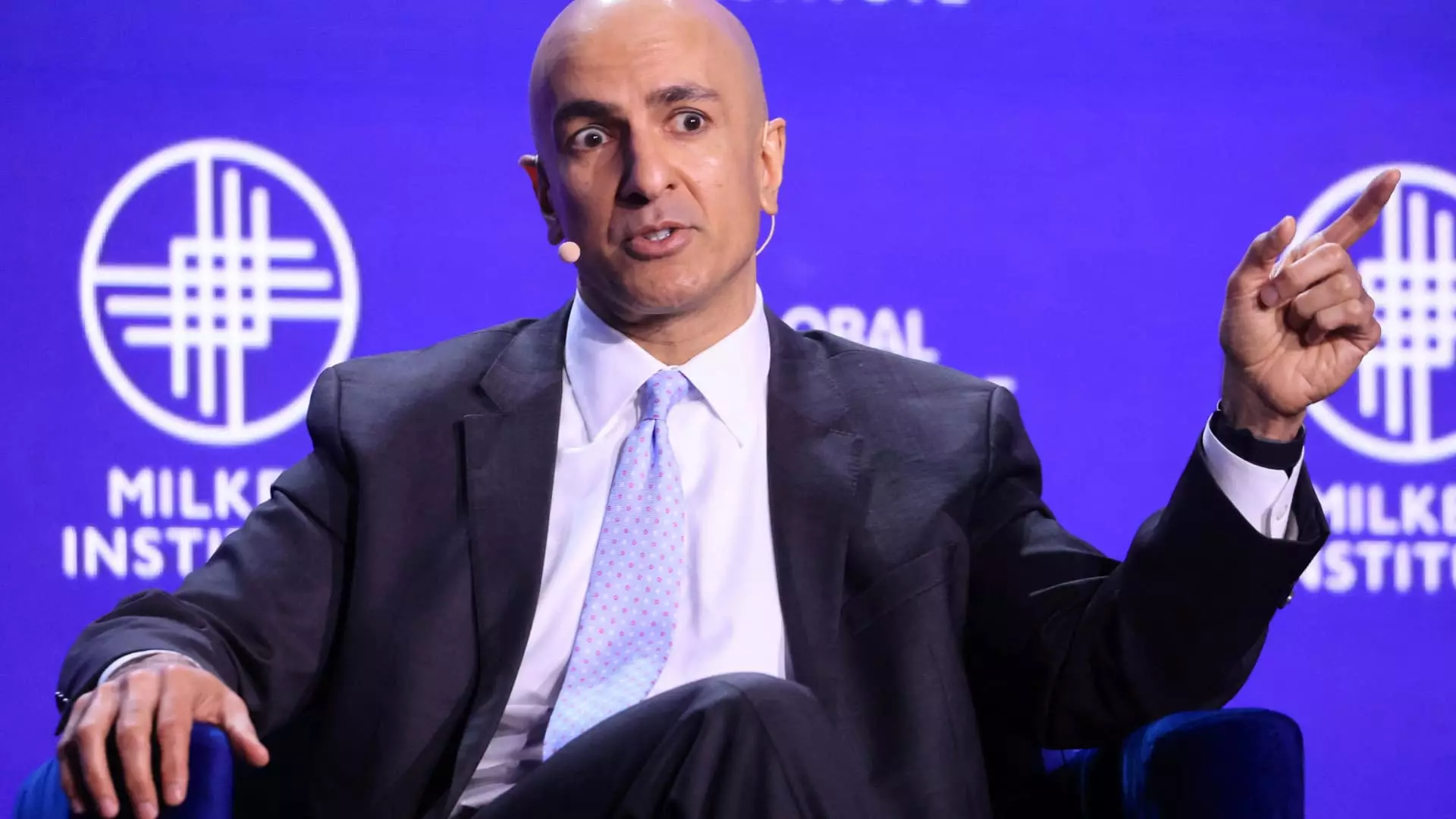In an environment marked by shifting economic indicators, recently, Neel Kashkari, the President of the Minneapolis Federal Reserve, provided insights regarding the trajectory of U.S. monetary policy. The Federal Open Market Committee (FOMC) surprised many last week with a substantial cut of 50 basis points in the benchmark overnight borrowing rate. This move marked the first significant reduction since the onset of the COVID-19 pandemic and earlier, the financial crisis of 2008. Through these cuts, the Federal Reserve aims to recalibrate its approach, particularly focusing on the implications of a softening labor market.
Kashkari’s assessment reveals that while the 50 basis points were a notable maneuver, the Federal Reserve anticipates a shift toward more conservative reductions in the future. He described the current conditions as still being in a “net tight position,” signifying that while there was a significant cut, the economic environment still requires cautious management to avoid overheating—an important consideration for any central banker faced with the constantly evolving economy.
Kashkari’s comments are indicative of a broader strategy by the Federal Reserve to navigate the dual challenges of managing inflation and supporting economic growth. With inflation rates exhibiting signs of returning to the target of 2%, officials are no longer solely focused on reducing inflation risks; rather, they are also tasked with ensuring that the labor market maintains its health. The recent trends in labor data seem to support this goal, showcasing a resilient job market.
However, Kashkari aptly highlighted that the Federal Reserve does not perceive their mission as complete. The acknowledgment that recent inflation data is “looking very positive” is tempered with caution. He articulated a broader commitment to vigilance against potential risks that could disrupt the current trajectory. This phrasing underscores a central bank philosophy responsive to emerging data, aware that economic conditions can shift unexpectedly.
The Federal Reserve has set its sights on a “neutral” interest rate, which is neither overly accommodative nor restrictive for growth. The consensus among FOMC members suggests the neutral rate hovers around 2.9%, significantly lower than the current target range of 4.75% to 5%. This desire for normalization is driving monetary policy discussions, with particular anticipation regarding the upcoming November and December meetings. Market assessments via the CME Group’s FedWatch instrument indicate traders are preparing for either a quarter-point or half-point cut, hinting at greater volatility in future monetary actions as the Fed gauges the evolving economic landscape.
Further insights from Atlanta Fed President Raphael Bostic bolster Kashkari’s perspective. He also expressed the need for the Fed to expedite the process of returning to a neutral policy, citing faster-than-expected progress on inflation and a cooling labor market. Bostic’s ability to vote this year adds weight to his predictions, demonstrating that the Fed leadership is beginning to reconsider their strategies more aggressively as conditions change.
While the unprecedented challenges of the past few years continue to shape the economy, this dual-pronged approach demonstrates cautious optimism among Fed officials. The combined rates of inflation management and labor market stability reveal a central bank in transition—a central bank that acknowledges its past interventions while also adapting to new economic realities.
As the economy continues to evolve, and with policymakers like Kashkari and Bostic leading the charge, the Federal Reserve is attempting to create a balanced approach that responds to current conditions while maintaining a firm eye on future risks. The ongoing discussion and anticipation for monetary policy adjustments will be pivotal for navigating an uncertain economic climate in the months ahead. Ultimately, the actions taken today and the lessons learned from past decisions will be crucial in ensuring sustained growth and stability in the U.S. economy.

